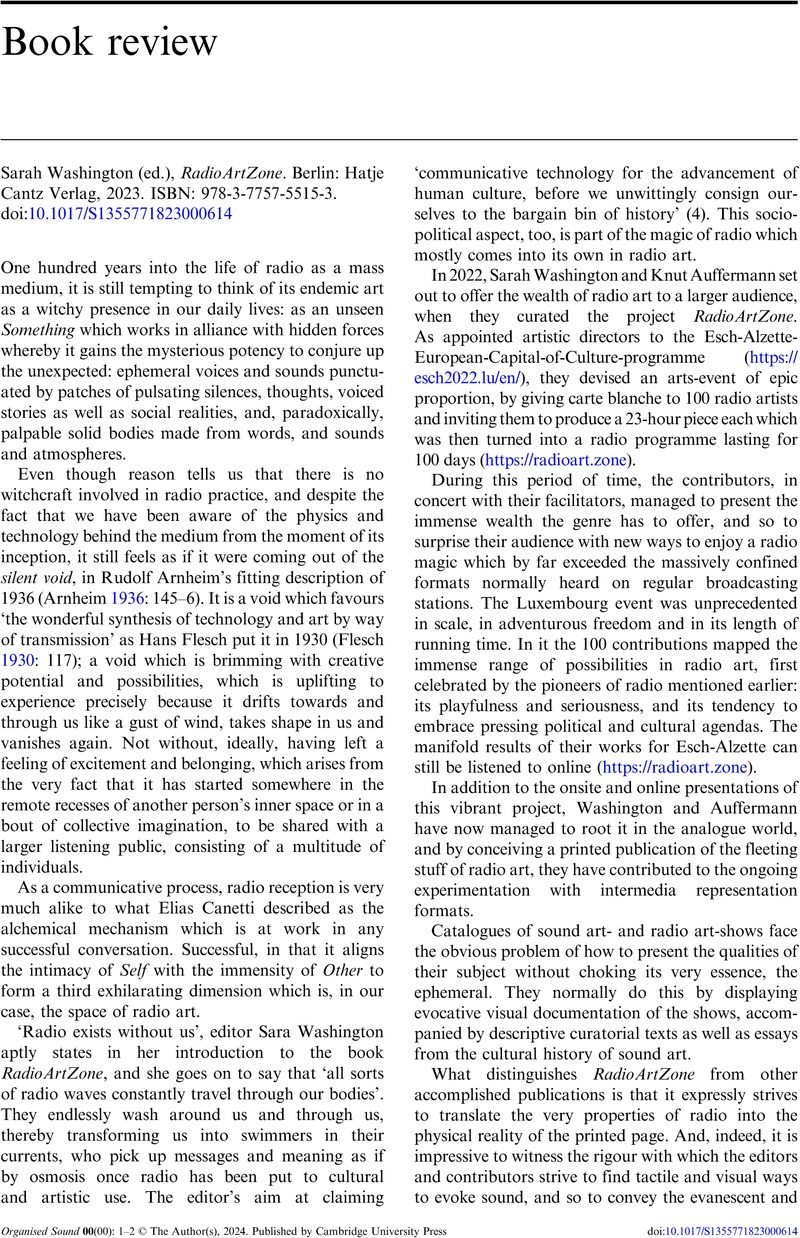No CrossRef data available.
Article contents
Sarah Washington(ed.), RadioArtZone. Berlin: Hatje Cantz Verlag, 2023. ISBN: 978-3-7757-5515-3.
Review products
Sarah Washington(ed.), RadioArtZone. Berlin: Hatje Cantz Verlag, 2023. ISBN: 978-3-7757-5515-3.
Published online by Cambridge University Press: 15 March 2024
Abstract
An abstract is not available for this content so a preview has been provided. Please use the Get access link above for information on how to access this content.

Information
- Type
- Book Review
- Information
- Copyright
- © The Author(s), 2024. Published by Cambridge University Press
References
REFERENCES
Flesch, H. 1930. Das Studio der Berliner Funkstunde. In Reichs-Rundfunk-Gesellschaft (ed.) Rundfunk Jahrbuch 1930. Berlin: Union Deutsche Verlagsgesellschaft, 117–20.Google Scholar


